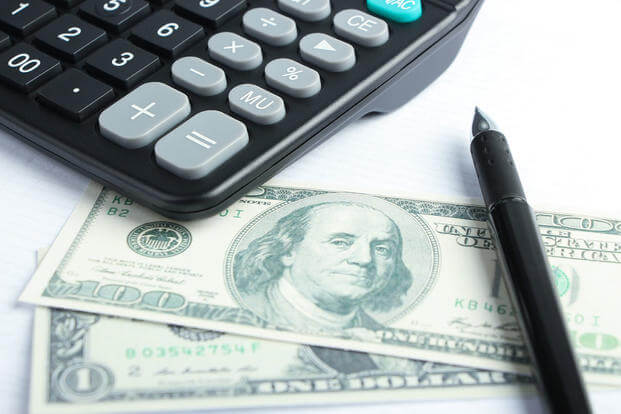"Budget" is a word that most people would like to delete from their vocabulary -- and according to a recent survey, many people have. A survey performed by Ipsos Public Affairs for legal website FindLaw.com found that 61 percent of Americans either don't have a household budget or have difficulty sticking to one. If this sounds familiar, or you just don't have the strongest money management skills and you're tired of running out of cash each month, a budget can ensure you have enough for expenses.
A budget is basically a spending plan that lets you track your income and expenditures over a period of time. And while a budget might limit how much you're able to spend on everyday expenses, the long-term benefits outweigh this minor inconvenience. Living on a budget helps you plan for the future, increase your personal savings and avoid debt. If you stick with your budget, you can actually stop living paycheck-to-paycheck.
However, the best ways to create and stick to a budget is to avoid viewing it as a weekly or monthly experiment. You end up having to pay the same expenses every year (think birthdays, back to school, Christmas presents), so plan long-term and create a yearly budget to keep your money on track for an entire 12 months.
How to Create a Budget
The idea of creating a personal budget can seem overwhelming, but there's really nothing to it. In fact, you can have a budget together in less than 30 minutes. To make the process easy, create a budget worksheet using a computer spreadsheet program. If you're not computer savvy, use a sheet of paper or a calendar.
1. Track Your Necessary Expenses
The first step to creating a yearly budget is to write down all your expenses. Start with your fixed monthly expenses. These include:
- Housing (35%) -- mortgage/rent, utilities, insurance
- Transportation (15%) -- auto loan, insurance
- Debt payments (15%) -- credit cards, student loan, other loans
- Savings/investments (10%) -- emergency fund, 401(k)
Notice the percentages next to each category. Ideally, this is how much of your income you can safely allocate to these expenses.
2. Figure Out How Much Each Expense Costs
Assign the appropriate figure next to each category and compute the sum total of these expenses.
3. Figure Out Your Discretionary Income
Subtract your total expenses from your monthly take-home pay to determine your discretionary income. This is money available for spending after you've paid your fixed monthly bills. Note: If your expenses total more than your income, you'll need to make adjustments, such as finding a way to earn additional income or lowering your fixed expenses. Now, some people mistakenly think of discretionary income as "free to do whatever I want money," and while it feels good to have a financial cushion, the way you handle this cushion says a lot about your money management skills.
Discretionary income is what you'll use for other monthly expenses, such as groceries, entertainment, dining out, shopping, vacations and the like. Allocate no more than 25 percent of your income for other expenses. Create a category on your budget worksheet for other expenses and assign a reasonable figure for each item in this category. The amount you spend in these areas will fluctuate depending on how much you have available.
Let's say you take home $2,500 per month and allocate $650 to other expenses. Your breakdown might look like this:
- Groceries -- $200
- Entertainment -- $100
- Dining out -- $100
- Shopping -- $250
At first glance, it looks like you're doing pretty well. Your figures are within budget and you're able to pay cash for everything. But this budget doesn't account for one-time expenses that occur throughout the year. To keep an accurate budget, your budget worksheet should include a category for annual expenses, such as gifts, car registration renewals, membership renewals, car repairs and other incidentals. How do you incorporate these expenses into your budget?
First, determine how much you'll spend on expenses outside your regular monthly expenditures. For example, you might allocate $500 a year for gifts, $80 a year for car registration renewals, $100 a year for membership renewals and $400 a year for incidentals. Add up these expenses and divide this figure by 12. Let's say your one-time expenses total $1,080/year. Create a new category in your monthly budget and set aside $90 a month. Deposit this money into a separate savings account.
Using the above breakdown, you might reduce how much you spend shopping and entertaining to compensate for this extra expense. Thus, when one-time expenses roll around, you don't have to scramble to come up with the cash -- it's already worked into your budget.
How to Stick With a Yearly Budget
Budgeting is the easy part. Sticking with your budget is often a different story. Some people do good the first few months of the year, but revert to old habits as the year progresses. Living off a budget calls for constant self-evaluation -- it's the only way to stay on track.
- Monitor your spending. Keep receipts or bank statements, and then review how much you spend in each category. Track your spending on a weekly basis to avoid going over budget.
- Make adjustments. You might need to tweak your budget throughout the year. Maybe you didn't allocate enough for groceries and go over budget in this category each month. You might increase your grocery budget and decrease your entertainment budget to compensate. Likewise, you might have a new one-time expense, such as an upcoming vacation, for which you'll need to allocate additional funds.
- Keep financial goals in view. Sticking to a yearly budget can put you one step closer to your financial goals. Whether you want to pay down debt or build a financial cushion, remind yourself of these goals. Spending more than you earn is the quickest way to kill a budget. Keep the big picture in mind and you're more likely to stick with your monthly spending plan.
Sample 12-Month Budget Worksheet
We found this excellent 12-month budget spreadsheet courtesy of vertex42.com that you can download and use for free, or simply use as inspiration for creating your own yearlong household budget.
This article was contributed by Valencia Higuera of GOBankingRates.com.




